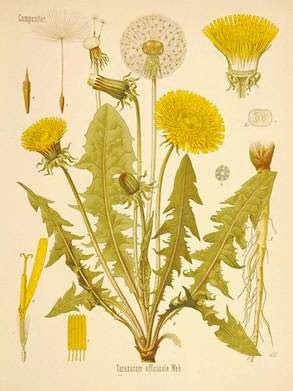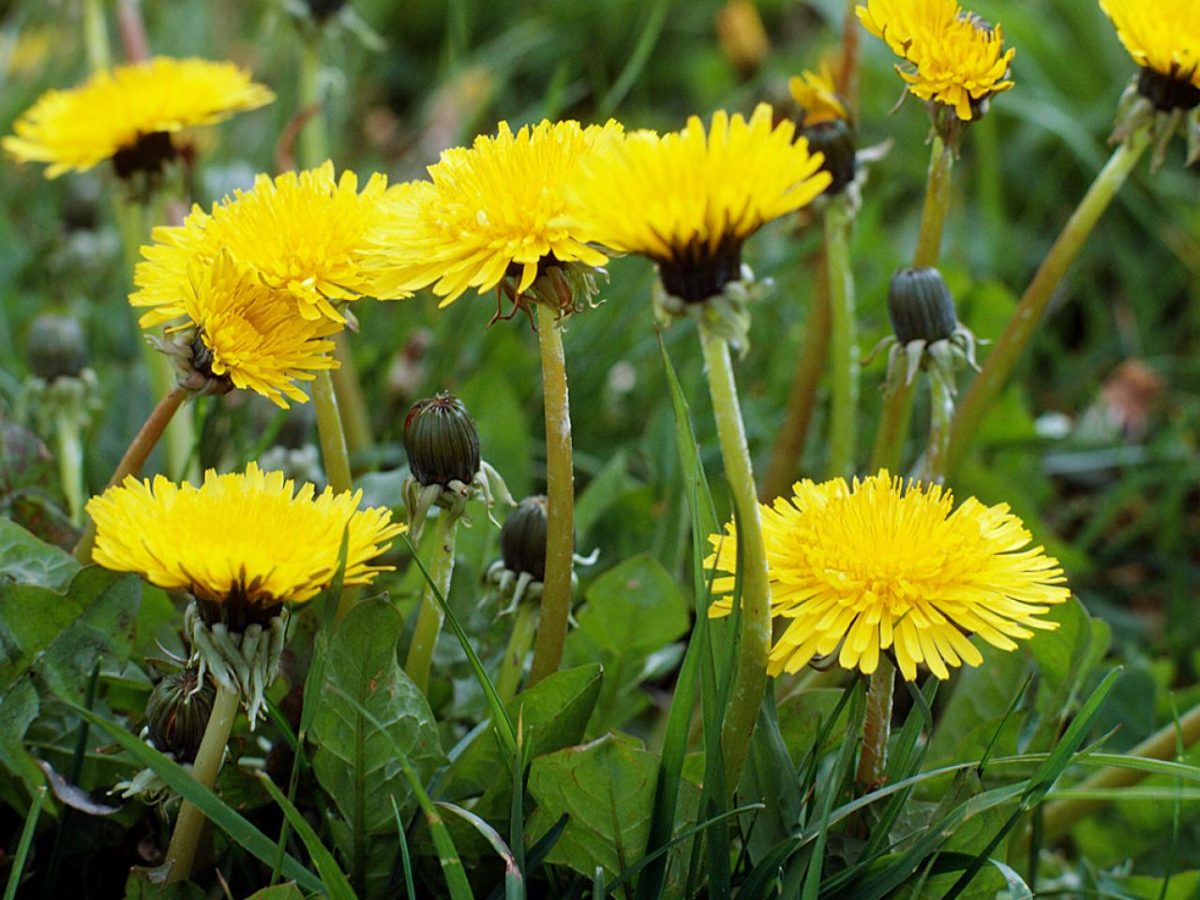The first recorded use of dandelion was in China. By the eleventh century, Arabic cultures were sharing its use. Soon all of Europe was using dandelion in their kitchens. The name dandelion is from the French, dent de lion, from Latin dens leonis meaning “lion’s tooth”, in reference to the jagged edged leaves. .
In North America, dandelion was originally introduced by European settlers, who used the young leaves as a salad green. Dandelion salad is often accompanied with hard boiled eggs.

After pollination, the dandelion flower matures into a white fluffy “blowball”.
This comprises single fruits each attached to a tiny brush-like parachute called a “pappus” – which has about 100 individual bristle filaments. This structure allows the seed to remain aloft over distances of 100 km or more when the air is warm and dry.
Dandelion prefers loose, rich, healthy soil, but it can grow just as readily in compacted, rocky, and dry soils. It grows at altitudes ranging from sea level to 10,500 feet, in broad and open meadows as well as in the inner city sidewalk cracks. Dandelion has the ability to adapt to its environment, no matter how challenging.
Dandelion is also a transformer, loosening compacted soil by growing deep roots, creating a micro climate that draws earthworms to change and rejuvenate the soil, drawing nutrients and toxins to the surface for use and transformation. Dandelions gently and firmly changes those conditions that no longer serve its environment through practical, gentle, and intentional transformation.
Dandelion is an aid in activating compost, making it a useful agent for getting transformative energies moving quickly and keeping those energies moving despite minor setbacks.
These bright yellow flowers open with the first morning light and close again in the evening. Dandelion is one of the first to flower in spring and one of the last to go dormant in the winter. Dandelion invites us us to be equally aware of the conditions under which we can best use the power we have.
Dandelion is an aid to its community, transforming its environment so more delicate plants can grow, providing a wealth of nutrients to a wide array of herbivores and omnivores, and providing bees and other insects with nectar when other plants cannot bloom.
It is a plant who asks us to share our energies and ourselves with our communities in an effort to nourish the world.
